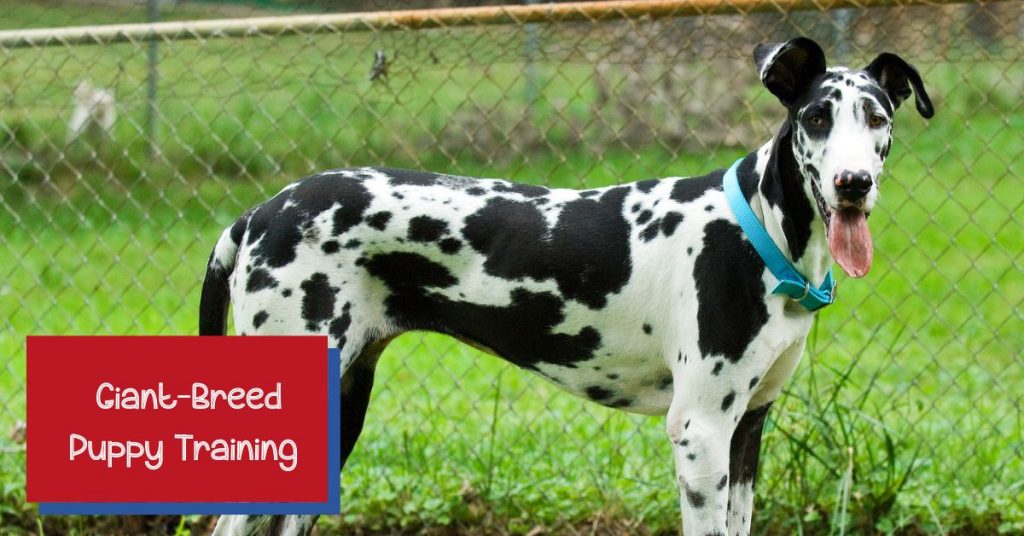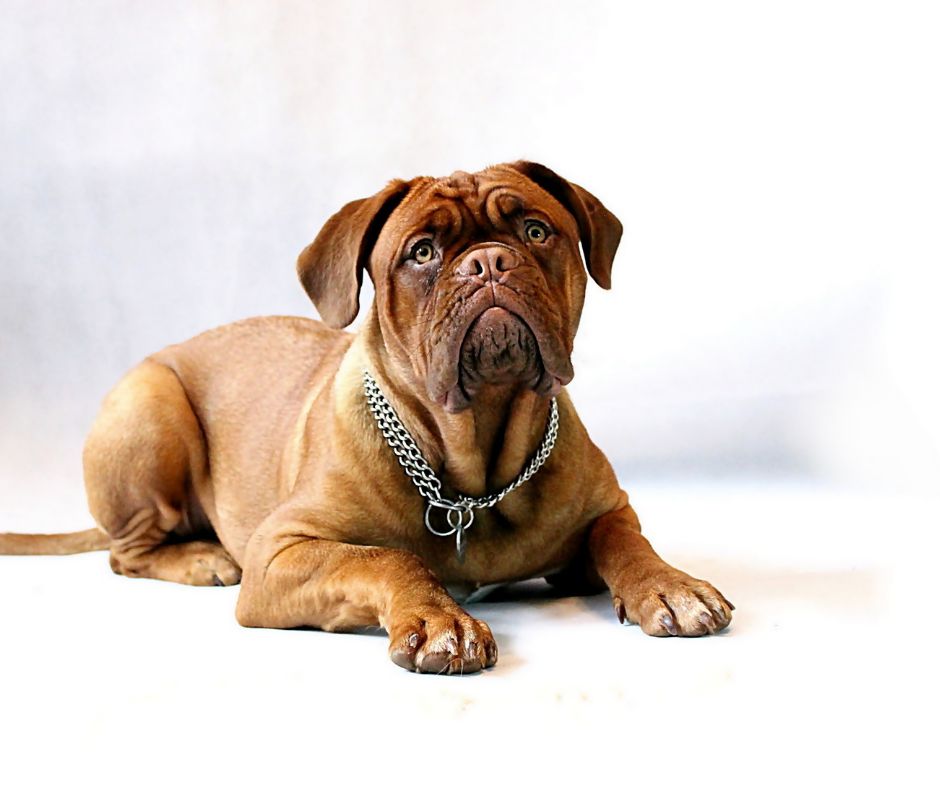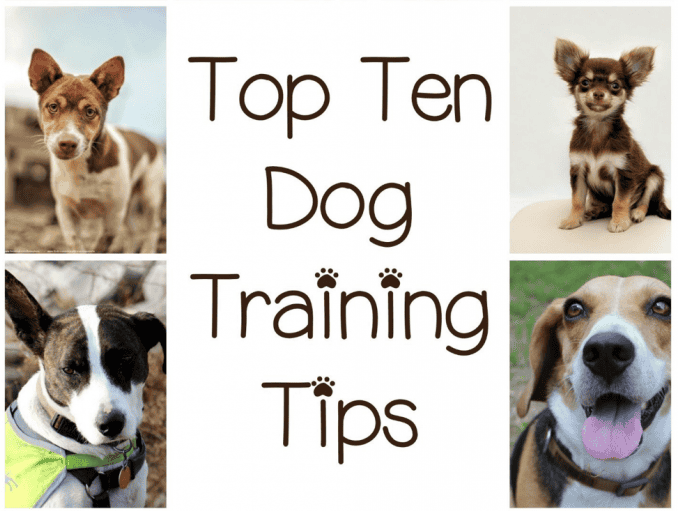Did you know that most puppies can start training and socialization as young as two to three weeks? Their minds are like sponges, ready to soak up stimuli and information! But does that hold true for giant breed dog training? Do XXL pups mature both cognitively AND physically later? Will a giant breed puppy be old enough to begin training as soon as a smaller puppy? Read on for the answers to all of these questions and more!

Do Giant Breed Dogs Mature Slower Than Small Breeds Cognitively and Physically?
According to a new study by Daniel Horschler of the University of Arizona, the larger a dog’s brain, the better they are at memory and cognition tasks. Pet owners performed the lessons with their puppies and submitted the results using ten tests that can be given to dogs.
Researchers discovered that larger dogs performed better than smaller dogs. The size was also linked to better performance in more complicated tasks. Larger dogs excelled at more complex tasks, particularly those requiring more cognitive work.
Using nine memory and decision-making tasks, some researchers assessed cognitive development and aging in over 4,000 dogs from 66 breeds. They discovered that all breeds, regardless of size or lifespan, tended to age at the same rate of cognitive aging; even large dogs grow faster and age at a faster physiological rate than small dogs.
Are Larger Dogs More Challenging To Train Than Smaller Dogs?
Actually, it’s the other way around. Small dogs can be trickier to train than larger dogs. They are more territorial indoors than larger dogs, who frequently regard the great outdoors as their primary turf. However, some small breeds can be litter-box trained. You really can’t do that with the big guys (or at least you probably wouldn’t want to), so there’s that!
To navigate our human world safely, big dogs must be better trained and more docile than small dogs. For various reasons, larger dogs should begin training as soon as possible.
Most importantly, puppies who will grow into giant-sized dogs require this early as possible to avoid issues down the road. While there’s absolutely NO evidence that large dogs are more aggressive than their smaller counterparts, the sad fact is people are far more frightened of, say, a Mastiff than a Maltese.
Tips For Training Your Giant Dog Breed
From what to teach your XXL pup to the best training strategies to use, keep reading for the best tips for success.

1. Start with These Basic Commands
- Sit- Teaching your dog to sit can be beneficial in various situations. It allows them to relax in stressful situations.
- Stay- This command follows on from the previous one. It is necessary to keep the dogs from charging at people. To help the dog learn to stay, take a step back after they sit and order him to stay sternly.
- Drop It- Large dogs can access various items because of their size. As a result, they may develop a habit of pulling and breaking things. As a result, teaching them to drop it is a critical task. You can begin by preparing the dog to pick something up, such as a toy, and then commanding them to drop it in exchange for a reward. Give the command to drop it if you notice the dog’s jaw relaxing.
Check out the video below for some of the other basic training commands all dogs need to know.
2. Stick with positive Reward-Based Training
All dogs, large-breed including, respond poorly to punishment. NEVER hit or yell at your dog. Period. Reward-based methods work FAR better in the long run. When your puppy obeys your commands, you can reward them with healthy training treats. A favorite toy, verbal praise, or a friendly pat can also help.
Big dogs adore treats! Unfortunately, most training treats made specifically for giant pups are a bit too large and loaded with calories. To avoid ruining their dinner- not to mention their waistline- look into training treats that are small and low in calories. I’ve used treats designed for smaller breeds while training my big dog. She doesn’t seem to care that they barely fill a tooth. She just likes that she’s getting treats.
I love this video explanation of reward training below:
3. Redirect Bad Behavior
Dogs, like children, crave attention and will jump at the chance to remind you that they exist. We sometimes unintentionally reward bad behavior in our dogs by giving them the attention they crave. Of course, bad behavior must be corrected, but others, such as jumping and barking, should be ignored. You and your dog must understand the difference between barking at a blowing leaf and warning you of an intruder.
Don’t rely solely on physical cues. We should also use body language to earn your dog’s respect, such as making eye contact and giving orders in a firm voice. Again, it is never a good idea to scold or punish your dog, though. “Firm” doesn’t mean “loud and frightening.”
Here are some tips:
4. Put Them On A Leash
Keep your big dog on a leash while out and about. Even if he has perfect recall (always comes when called), even if he’s the gentlest giant in the whole wide world, it’s not a good idea to let him run free.
If you use clicker training for other obedience tasks, you should try something similar on your dog walks. Dogs, huge ones, require a lot of exercise, and it may appear that they are walking you when you go out. Treats can help motivate them, but sticking to a routine is the most important thing.
Check out Zak George’s video guide to leash training for all dogs below:
5. Try Agility Training
Teaching your dog obedience training is one way to help him feel more comfortable around people. But teaching him how to be a well-behaved dog also allows him to sense his size. Agility training or other similar activities can also be suitable for large dogs because they will enable them to use their brains and bodies.
Whatever level of training your pet is at, assistance is always available to help him progress. Remember that obedience classes aren’t just for your dog but also for you. Even if you have previous experience, you and your large dog should spend time getting to know each other and practicing working together.
With the proper routine and consistent encouragement from you, you’ll have your pet responding to your calls in no time. Before you know it, your beloved big guy could be pulling of feats like this:
Conclusion
Throughout their lives, giant dogs require training and enrichment. While all dogs deserve training, it must begin early and last a lifetime when your dog’s size outweighs family members. When it comes to manners, a giant dog will weigh more than some grown adults, so there is little room for error.
There are some things that small or even medium-sized dogs can get away with, such as jumping on people, that would be a significant safety concern if a large dog did them. Having a large dog requires a considerable commitment to daily training and ensuring your dog has impeccable manners.
A giant dog’s average lifespan is between eight and ten years, but some have lived as long as thirteen years. Big dogs also live shorter lives than smaller dogs. This is the most challenging aspect of loving giants, but you can use their shorter lifespan to motivate you to make every moment count: to do all the training you want to do, play all sports, and go on all the trips you can with these big dogs.
Have you ever done giant breed dog training? Share your thoughts and experiences below!

